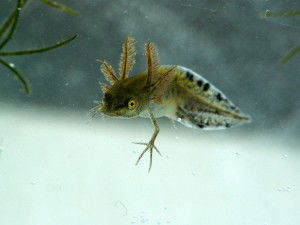Pioneering DNA technique to help endangered aquatic species
31st March 2014
A groundbreaking new technique, which detect minute DNA traces in water, offers new hope for the protection of rare and endangered aquatic species – including Britain’s population of Great Crested Newt – by making it much easier to find them in the depths of ponds and streams.
In one of the world’s first applications of the pioneering new survey method, a Defra-funded research project has discovered that monitoring levels of environmental DNA (eDNA) in water is a remarkably accurate and rapid method for detecting the Great Crested Newt.
The research – led by the Freshwater Habitats Trust with genetics company SpyGen, Amphibian and Reptile Conservation and the Durrell Institute for Conservation and Ecology at the University of Kent – is an important breakthrough.

